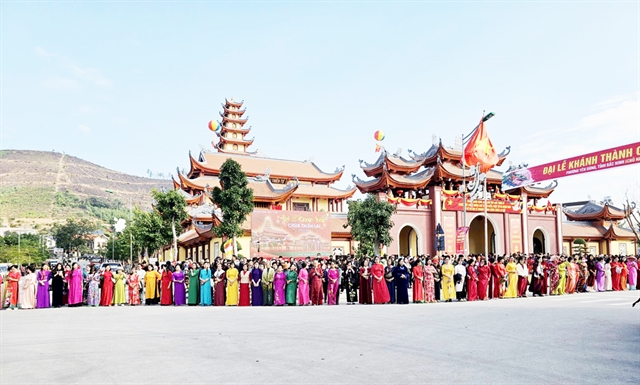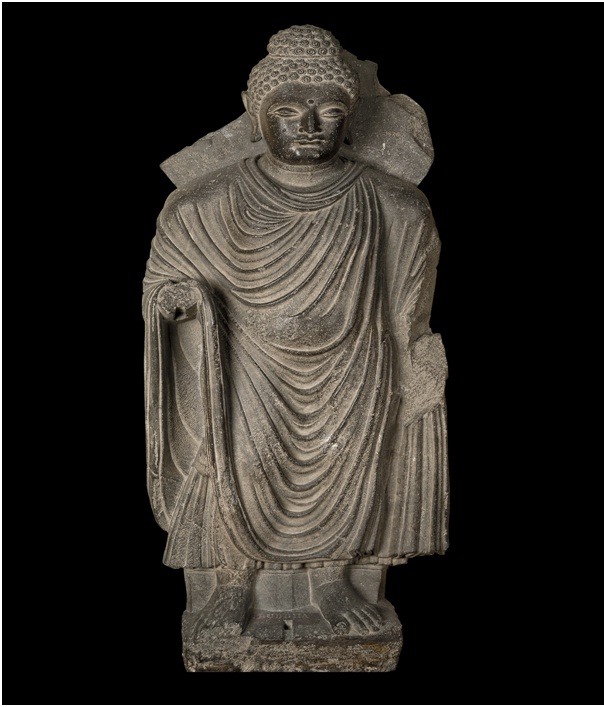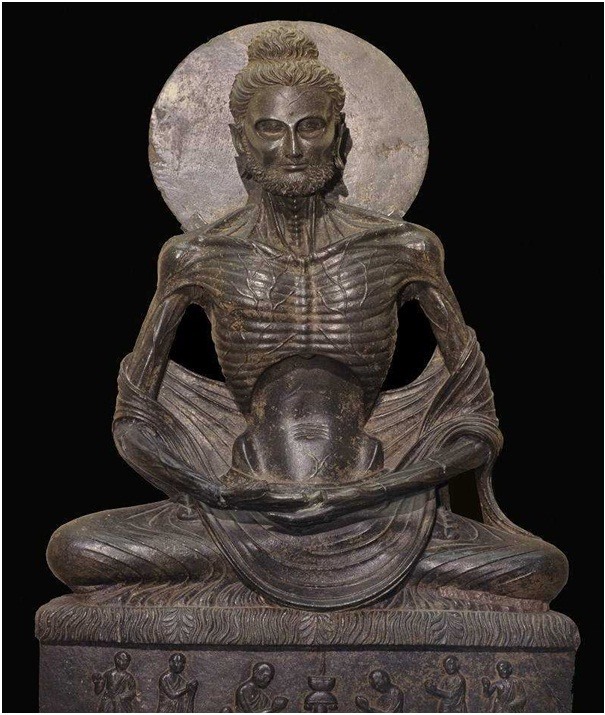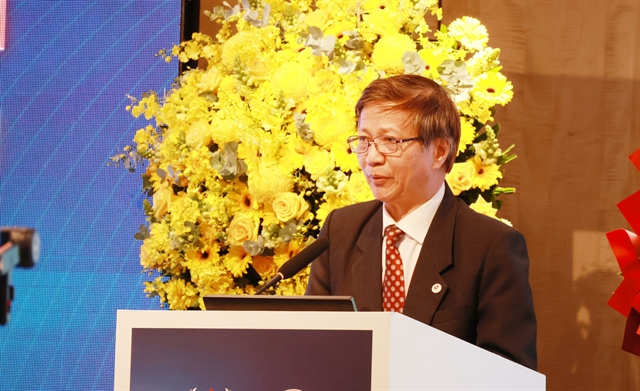 Life & Style
Life & Style

On the occasion of the National Day of Pakistan on March 23, Pakistani Ambassador to Việt Nam, Zaigham Uddin Azam, hightlights the nation's Buddhist background.
 |
| Nationally treasured: Walking Buddha, 2nd–3rd century, grey schist, 108 x 49 x 25 cm, Peshawar Museum. — Photo courtesy of the Embassy of Pakistan |
On the occasion of the National Day of Pakistan on March 23, Pakistani Ambassador to Việt Nam, Zaigham Uddin Azam, hightlights the nation’s Buddhist background.
Gandhara both designates a geographical region and a particular style in art. The core region of Gandhara was located around today’s city of Peshawar in Pakistan’s northwest. In terms of art, though, “Gandhara” encompasses a far larger area. It stretches from Kabul to Islamabad and also includes the Swat Valley to the north of Peshawar.
As recent research has shown, the civilization of Gandhara was shaped by many influences. However, two factors stood out especially. One is the Greek culture, which had firmly established itself in the region following the conquest by Alexander the Great in the middle of the 4th century; the other is Buddhism, which reached the region a short time later, having grown into a decisive constant by the beginning of the Common Era.
Gandhara played a significant part in the advancement of Buddhism toward the Mahayana, or Great Vehicle, one of the principal schools of Buddhism. And finally, it was because of the trade routes leading through Gandhara that Buddhism was able to spread across East Asia.
The heyday of the Gandhara civilisation lasted from the 1st to the 5th century, chronologically more or less overlapping with the rule of the Kushans. The Kushans themselves were no adherers to Buddhism, but they tolerated it and, apparently, supported the development of Buddhist art. Almost all the Gandharan works of art known to us today as products of Buddhism, even though there were other contemporaneous religions.
The extent of Gandhara proper actually included the Peshawar valley, the hills of Swat, Dir, Buner and Bajaur, all of which lie within the northern bounds of the modern day nation of Pakistan. However the bounds of Greater Gandhara (or regions where the cultural and political hegemony of Gandhara held sway) extended towards the Kabul Valley in Afghanistan and the Potwar plateau in the province of Punjab in Pakistan, in close proximity to the capital city of Islamabad, and bounded off by the location of the grand Mankiyala Stupa on the outskirts of the capital.
Takht-i-Bahi
Takht means “throne” and bahi, means “water” or “spring” in Persian/Urdu. The monastic complex was called Takht-i-Bahi because it was built atop a hill and also adjacent to a stream. Located 80 kilometers from Peshawar and 16 kilometers northwest of the city of Mardan, Takht-i-Bahi was unearthed in early 20th century and in 1980 was included in the UNESCO World Heritage list as the largest Buddhist remains in Gandhara.
Taxila (Dharma Rajika Stupa-Taxila)
The modern town of Taxila is 35km from Islamabad. Most of the archaeological sites of Taxila (600 BC to 500 AD) are located around Taxila Museum. For over one thousand years, Taxila remained famous as a centre of learning of Gandhara art of sculpture, architecture, education and Buddhism in the days of Buddhist glory. There are over 50 archaeological sites scattered in a radius of 30 km around Taxila. Some of the most important sites are: Dhamarajika Stupa and Monastery (300 BC-200 AD), Bhir Mound (600-200 BC), Sirkap (200 BC-600 AD), Jandial Temple (c.250 BC) and Jaulian Monastery (200-600 AD).
A museum comprising various sections with rich archaeological finds of Taxila, arranged in chronological order and properly labeled, has been established close to the site. It is one of the best and well maintained site museums of Pakistan.
Swat (Shingardar Stupa)
The lush green valley of Swat District is known as the land of enthralling beauty, where Alexander of Macedonia fought and won some of his major battles. Swat was once a cradle for major strands of Buddhism, where 1,400 monasteries flourished. It was the home of the famous Gandhara School of Sculpture, which was an expression of Graeco-Roman form in the local Buddhist tradition.
Pakistan is the custodian of Buddhist Gandhara Civilisation and there are numerous holy places in this country of great value for Buddhist people from across the world. To promote tourism, the Pakistan Tourism Development Corporation (PTDC) is planning to hold a Buddhist conference focusing on Buddhist Scholars and tour operators in the first half of 2017.
We welcome the honourable Buddhists of the Socialist Republic of Việt Nam to be our guests and explore the new heights of Buddhist treasures in Pakistan. — VNS
 |
| Extreme austerity: Siddharta Fasting, 4th-5th century, dark grey schist, 85 x 53.5 x 20 cm, Central Museum Lahore. — Photo courtesy of the Embassy of Pakistan |




